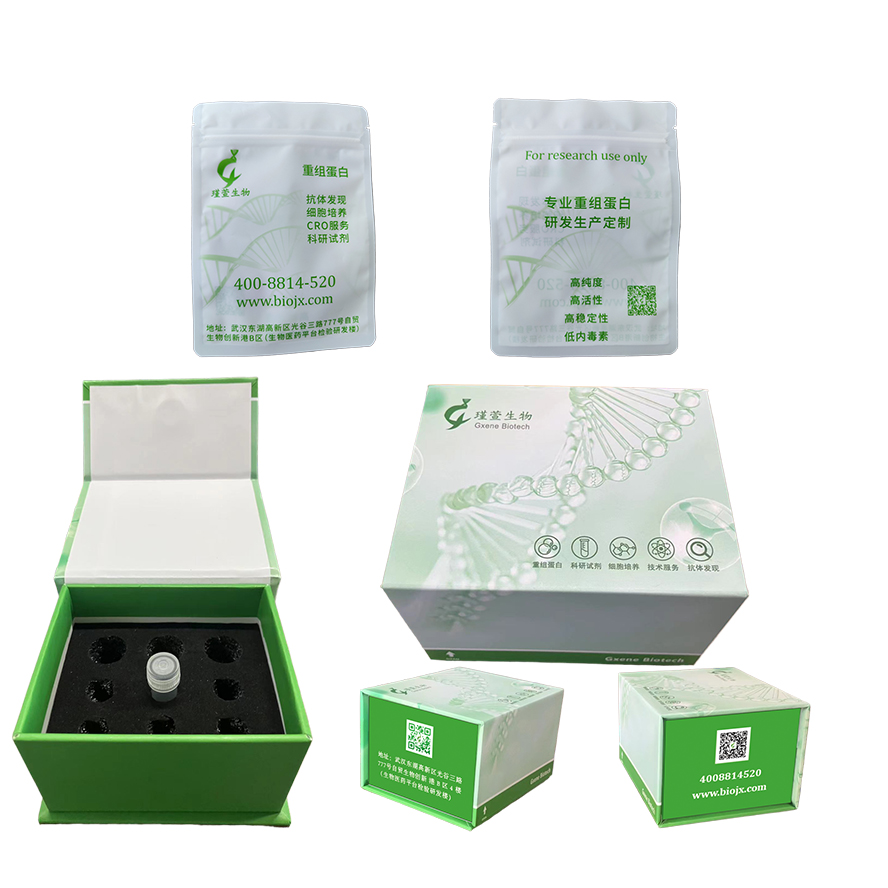研究方向
载脂蛋白J(apoJ),也称为簇蛋白(CLU),与血液中HDL中的脂质和apoA1紧密相关,通过大量研究已被提议作为此类生物标志物。在缓解动脉粥样硬化的过程中,apoJ可以促进巨噬细胞泡沫细胞输出胆固醇和磷脂,并通过与许多已知的炎症蛋白相互作用而发挥细胞保护和抗炎作用,这可以预测临床心血管事件的发生,并可能实际上发挥作用C 反应蛋白、对氧磷酶和瘦素等在介导动脉粥样硬化疾病中的因果作用。
Human
表达宿主
HEK293 cells
描述
Recombinant Human Clusterin/Apo-J/CLU Protein is produced by HEK293 expression system. The target protein is expressed with sequence (Asp23-Arg227 (βchain)&Ser228-Glu449 (αchain)) of human Clusterin/Apolipo J/Apo-J/CLU (Accession #NP_001822) fused with a 6×His tag at the C-terminus.
标签
C-His
纯度
> 95% by SDS-PAGE.
内毒素
< 0.1 EU/μg of the protein by LAL method.
制剂
Lyophilized from a 0.22 μm filtered solution of PBS, pH 7.4.Contact us for customized product form or formulati
储存
Store the lyophilized protein at -20°C to -80 °C for long term.
After reconstitution, the protein solution is stable at -20 °C for 3 months, at 2-8 °C for up to 1 week.未开盖的干粉蛋白在 -20°C至-80°C可保存12个月;
复溶之后,蛋白溶液在-20°C及以下可保存3个月,在2-8℃可保存1周。
After reconstitution, the protein solution is stable at -20 °C for 3 months, at 2-8 °C for up to 1 week.未开盖的干粉蛋白在 -20°C至-80°C可保存12个月;
复溶之后,蛋白溶液在-20°C及以下可保存3个月,在2-8℃可保存1周。
复溶
Centrifuge the vial before opening. Reconstitute to a concentration of 0.1-0.5 mg/mL in sterile distilled water. Avoid votex or vigorously pipetting the protein. For long term storage, it is recommended to add a carrier protein or stablizer (e.g. 0.1% BSA, 5% HSA, 10% FBS or 5% Trehalose), and aliquot the reconstituted protein solution to minimize free-thaw cycles.收到重组蛋白产品之后请检查蛋白冻干粉末是否贴于瓶底,如果粉末浮起,开盖之前请先低温离心。将蛋白用说明书中指定的缓冲液复溶至0.1-0.5 mg/mL(请注意蛋白复溶浓度不能低于0.1 mg/mL),室温平衡5-10 min保证充分溶解,复溶过程中请不要剧烈涡旋及吹打蛋白溶液。如需长期储存,建议复溶时添加载体蛋白或者稳定剂(如0.1% BSA, 5% HSA, 10% FBS 或者 5% 海藻糖),同时将复溶后的蛋白溶液按照需求进行分装,储存于-20°C至-80°C,随取随用,避免反复冻融。
背景信息
The protein encoded by this gene is a secreted chaperone that can under some stress conditions also be found in the cell cytosol. It has been suggested to be involved in several basic biological events such as cell death, tumor progression, and neurodegenerative disorders. Alternate splicing results in both coding and non-coding variants.

